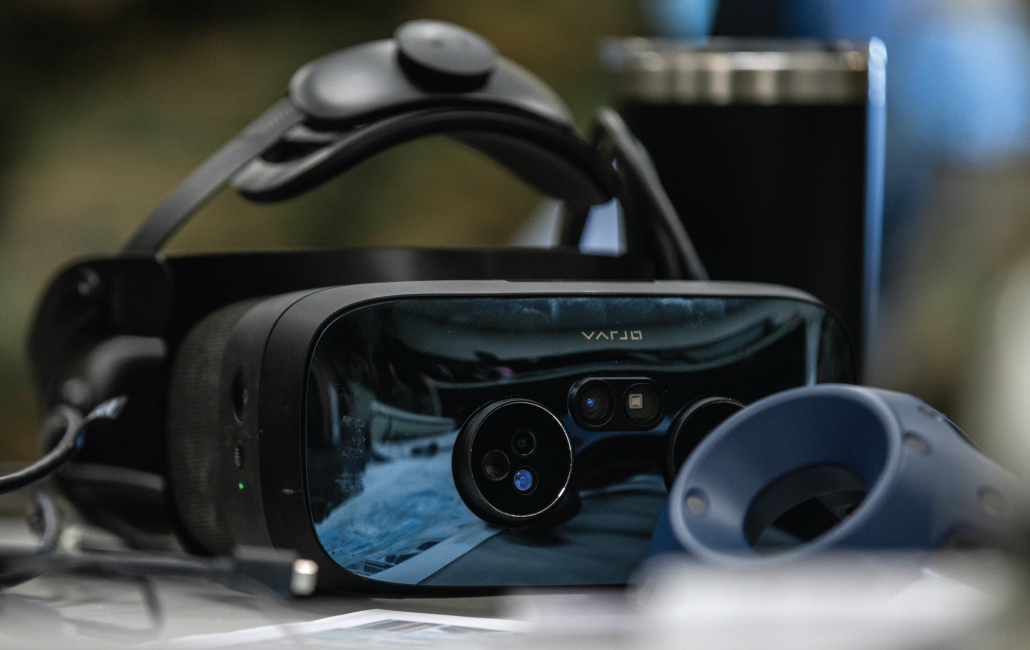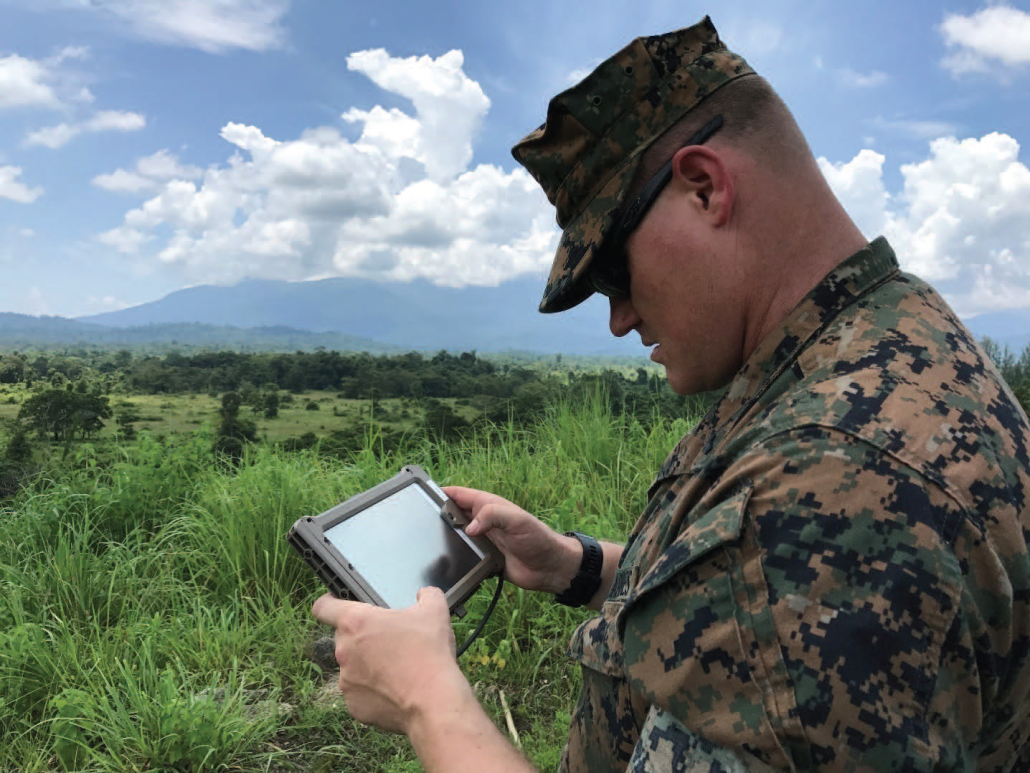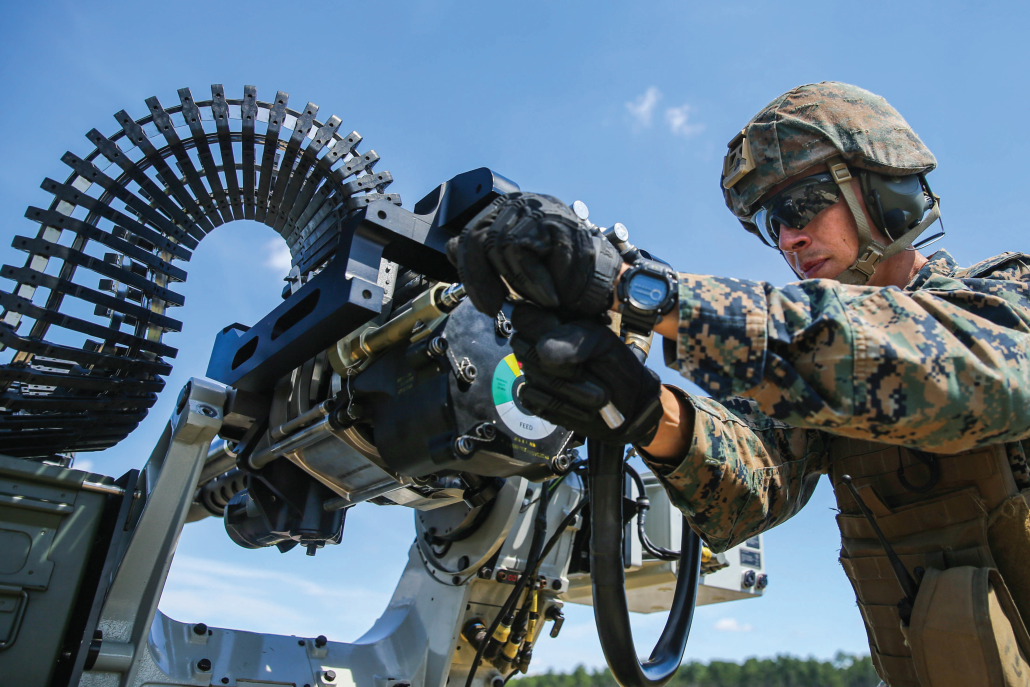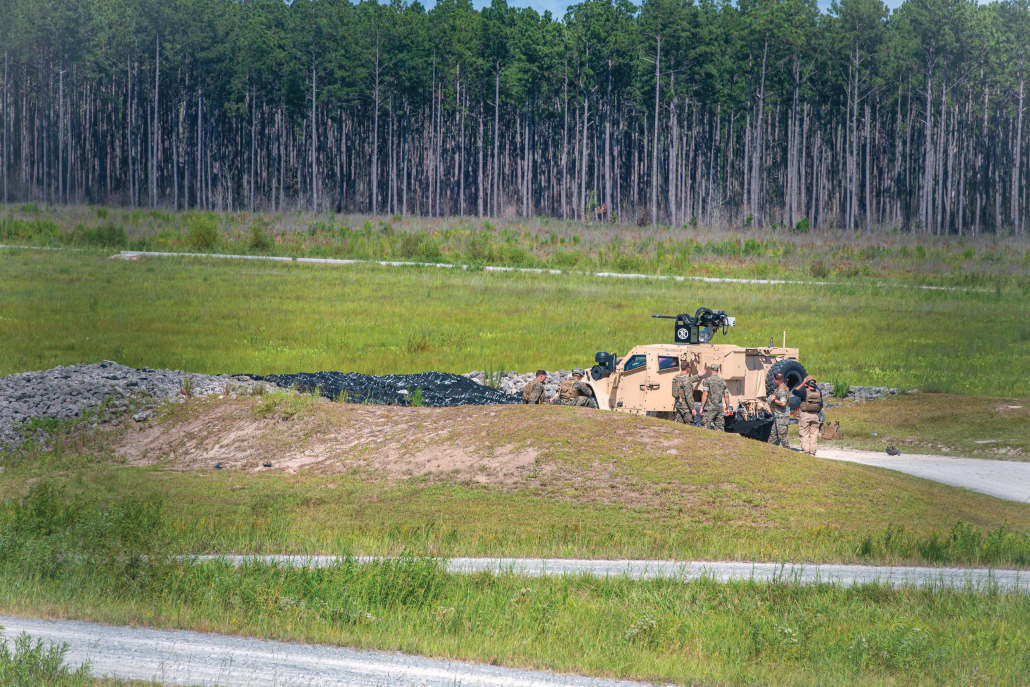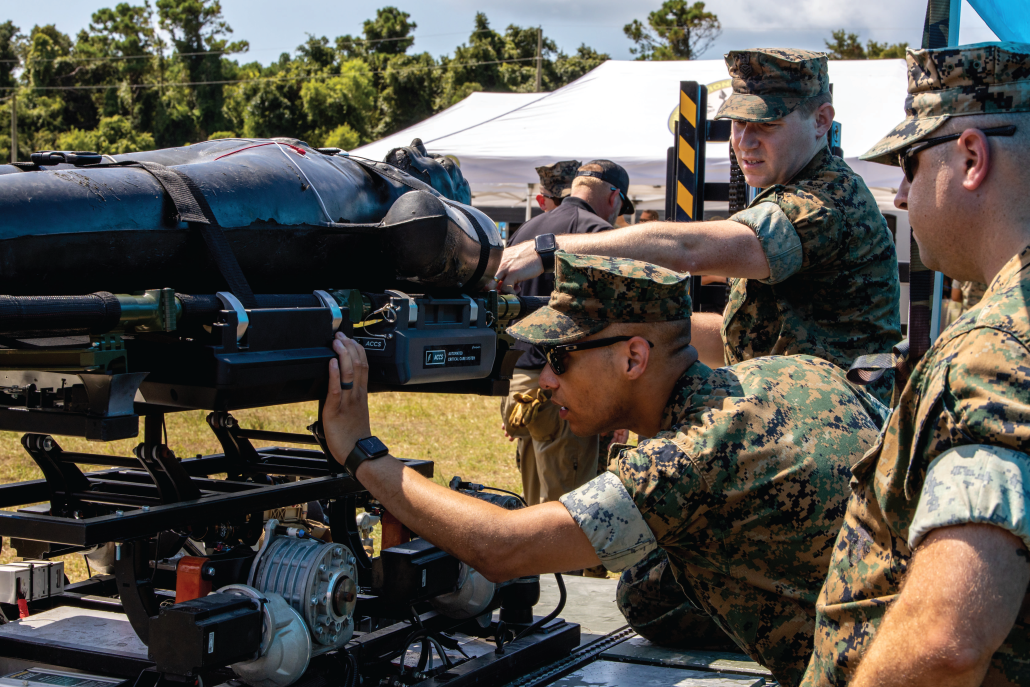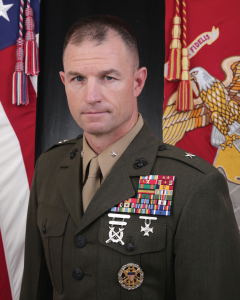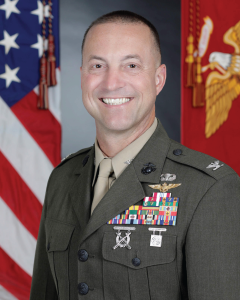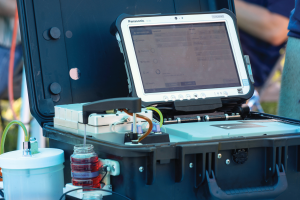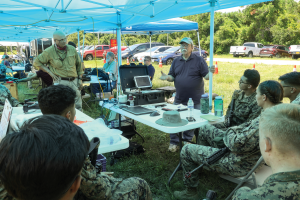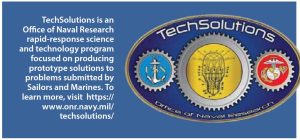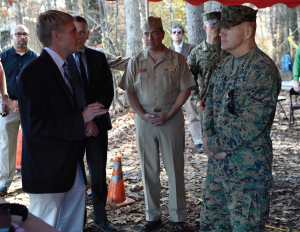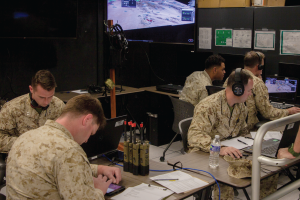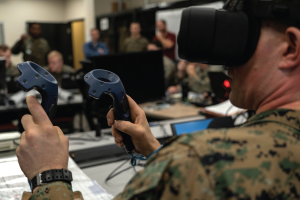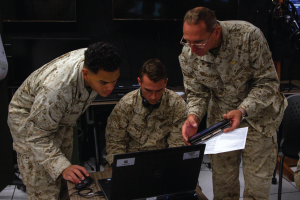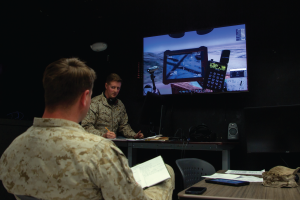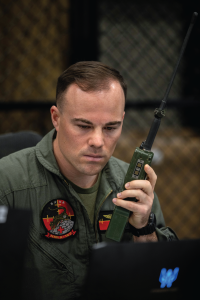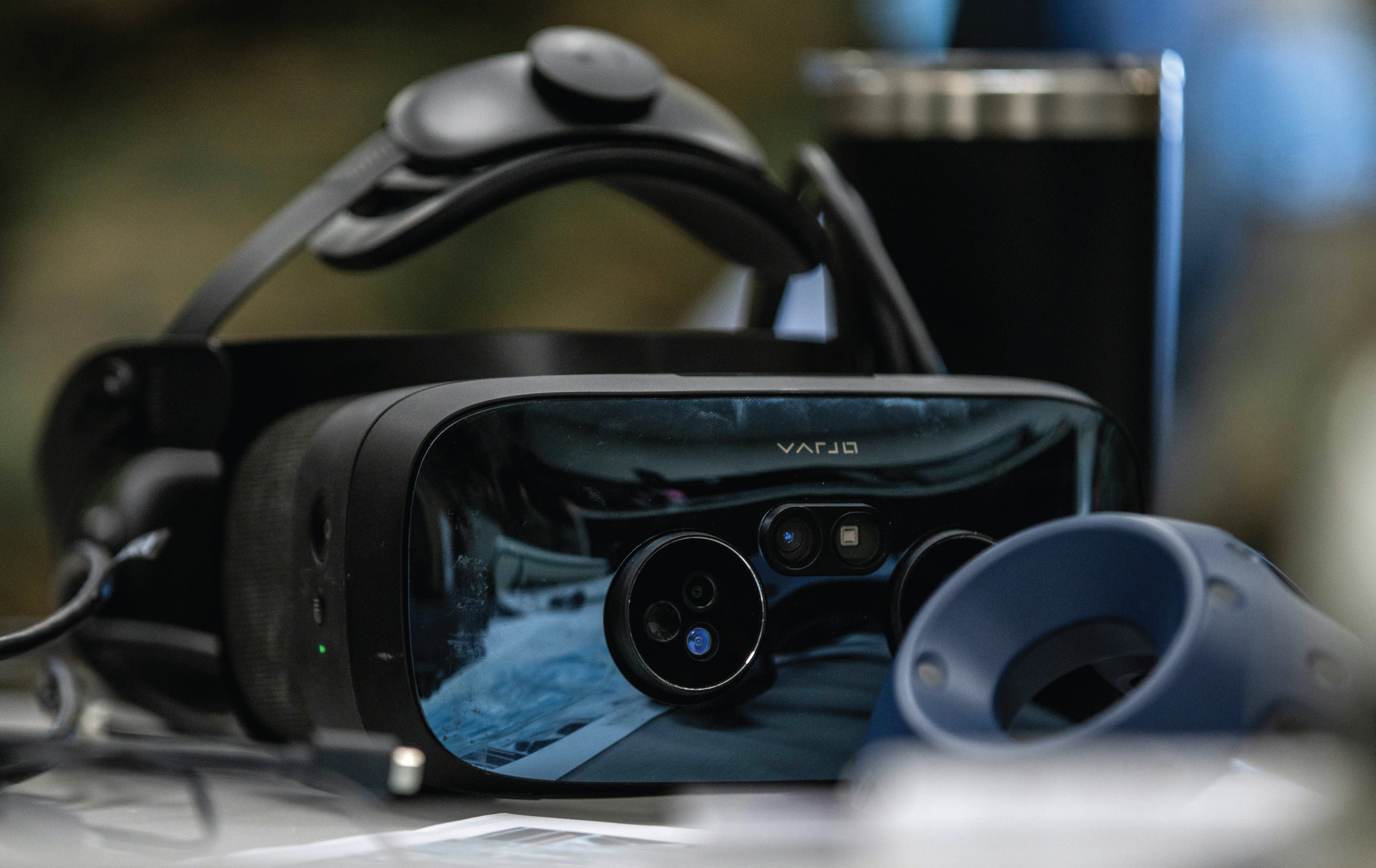
Office of Naval Research: Preparing the Marine Corps for Battlefields of the Future
By: Sam LichtmanPosted on June 15, 2023
“My predecessor told me … ‘we don’t have lightsabers and hover tanks in the basement here, but it’s right down the road.’ ”
—Colonel Frederick Lance Lewis Jr., USMC, Assistant Vice Chief of Naval Research (AVCNR)
The United States military is the most technologically sophisticated fighting force the world has ever seen. Its dominance comes not from its immense size, but from its ability to rapidly project force on a global scale, powered by an ever-improving arsenal of hardware and software the likes of which only a science-fiction writer could predict. The Marine Corps has always organized itself to be as flexible as possible, and with Force Design 2030 refocusing the Corps around that principle, it will need to modernize more rapidly than ever before. Force Design 2030 asserts that it is imperative to “transform the Marine Corps into a more agile, efficient, and technologically advanced force to meet the challenges of the future.” Proudly leading that charge are the devoted men and women of the Office of Naval Research (ONR).
The Office of Naval Research traces its roots back to the late 19th and early 20th centuries, a time of rapid change. For the denizens of Europe and North America, industrialization changed every facet of life; how we ate, how we worked, how we traveled, and especially, how we fought. The First World War proved to the world’s generals and admirals that a military even a few years out of date would be hopelessly outmatched on the modern battlefield, a fact of which American leaders were especially aware. Exactly 100 years ago this month, on July 2, 1923, the Naval Research Laboratory (NRL) was established to lead technological research and development programs throughout the Department of the Navy, including the Marine Corps. Throughout the interwar period and during World War II, NRL completed early pioneering work on many of the technologies we take for granted today: remotely piloted aircraft, sonar, and radar, just to name a few.
Coming out of World War II, American geopolitical strategists recognized that the U.S. had the opportunity to become the dominant military power in the world but could only do so by maintaining a technological edge over foreign adversaries. To that end, on Aug. 1, 1946, President Truman signed Public Law 588, establishing the Office of Naval Research to “plan, foster and encourage scientific research in recognition of its paramount importance as related to the maintenance of future naval power, and the preservation of national security.” Since then, ONR has overseen all U.S. naval science and technology programs, coordinating NRL’s work with that of other laboratories across the country and around the world.
For new technologies to meet warfighters’ needs, the people developing those technologies need perspective on how their work actually makes a difference to the end user. To that end, ONR draws its manpower from the operational military. Its senior leadership consists of actual warfighters who have already served on air, land, and sea; several have combat experience. Even many of the civilian employees are veterans now in their second careers. Because the Marine Corps is an integral part of the Department of the Navy, the positions of vice chief of naval research (VCNR) and assistant vice chief of naval research (AVCNR) are always staffed by Marines so they can advocate for the Corps’ future needs.
Pushing the Marine Corps into the future is a huge responsibility. As the VCNR, Brigadier General Kyle B. Ellison also serves as the Commanding General of the Marine Corps Warfighting Lab (MCWL), the Futures Directorate, and the Wargaming Center. “He’s a very, very busy individual,” confirms Colonel Frederick Lance Lewis Jr., the AVCNR. “What he has put out is a campaign plan for, ‘How are we going to get from where we are now to Force Design 2030?’ My job as the assistant vice chief of naval research is to ensure that Marine Corps’ equities are being met in science and technology development.” Col Lewis came to ONR last summer after three years as the commanding officer of Marine Corps Air Station Iwakuni.
As a pilot with more than 3,900 total flying hours, including more than 400 in combat, Lewis is intimately familiar with the importance of the work ONR does. Throughout his 27-year career, he has observed and directly benefited from a slew of new technologies developed at least in part by the organization he now helps lead.
“It’s interesting because you don’t think about it in real time. I’m an F-18 pilot by trade. When I started flying the F-18 in ’99, there was no GPS in the aircraft! There were no GPS weapons. Laser-guided weapons were … something that was talked about in hushed tones. Targeting pods were in their infancy,” Lewis said. “And now go to today … what I’ve seen is total immersion in GPS. GPS weapons and laser-guided weapons, that’s the norm. If you’re dropping a ‘dumb’ bomb, that’s the rare, exciting exception.”
Beyond precision-guided munitions, Lewis has seen new technologies pervade every aspect of warfighting. “Helmet-mounted queueing system, Link 16, improvements in radar, targeting pods—holy cow, we could talk forever about advances in targeting pods—downlink video, SATCOM, all kinds of things that have been incorporated now into aircraft,” Lewis said. “On the ground side, never did I think when I was doing my first FAC [forward air controller] tour, when I was on my ground tour in Iraq, ’04-’05, that you would be able to livestream video down to a battalion COP [common operational picture], and now it’s normal,” he added.
“Some of the up-armor capability, MRAP [Mine Resistance Ambush Protected vehicles], QuikClot, all of these things, you just think about … holy smokes, none of that stuff was thought of, invented, and it all started in a place like this,” Lewis said. “For me, I’ve seen that arc of technology and just how valuable technology is, and what does it take to deliver it to the fleet, having been on the user end of it.”
Each of ONR’s five departments, called Codes, directly manages programs within a specific area; the Warfighter Performance department, officially designated Code 34, does a great deal of work that directly benefits Marines on the ground. From its headquarters in downtown Arlington, Va., ONR coordinates each department’s work at various research centers throughout the U.S. and abroad, such as NRL, MCWL, and the many Naval Surface Warfare Centers (NSWCs). Secure networks allow scientists and engineers there to collaborate in real time with their counterparts in other services of the U.S. military, allied militaries, research universities, and the private sector. Reporting to Col Lewis are five Marine officers, one in each Code, who leverage their scientific education and Marine Corps experience to direct the program officers’ research.
To equip Sailors and Marines for the battlefield of the future, ONR must first be able to predict that future. As the expeditionary portfolio director, veteran Marine Billy J. Short Jr. tries to do just that. In the absence of a crystal ball, he and his associates use a three-part timescale to analyze the future based on the levels of maturity of various new technologies. “The close, deep, and deeper fight is what we call it,” he says. “I need to make sure that we have a spectrum of technologies that the Marine Corps can adopt over that timeline.” In this context, “close” refers to programs which should conclude within the next three to five years, yielding results that will likely benefit many of the Marines reading this article today.
One example of a technology nearing maturity is a device known as the Portable Fluid Analyzer Plus (PFA+), which promises to significantly streamline the workflow for any Marine whose MOS involves vehicle maintenance. An important but underappreciated part of keeping vehicles running is checking lubricants, fuels, and hydraulic fluid for contaminants or debris that could indicate or even directly cause a vehicle to break down at the worst possible moment.
Currently, fluid testing requires the Marine to package a sample and ship it to an offsite laboratory that may be hundreds of miles away, then wait days for the lab to send back a detailed analysis. As its name suggests, PFA+ effectively packages all the capability of a fully equipped scientific laboratory into a man-portable Pelican case and completely automates the testing process. With minimal training, anyone can carry the device to wherever it is needed and quickly test a fluid sample to determine its exact composition and determine what impurities it has. Once it arrives in the fleet within the next few years, PFA+ will reduce the processing time from several days to less than an hour, allowing maintenance technicians to keep more vehicles running with less work.
During field trials at Camp Lejeune, a PFA+ prototype proved its worth when a vehicle unexpectedly broke down in the field. Instead of canceling the trial and calling for motor transportation Marines to recover the vehicle, the quick-thinking Marines in the field used the PFA+ unit to test its fuel. Determining that moisture in the fuel system had caused the breakdown, the Marines were able to quickly restore it to working order and continue the scheduled testing, saving untold manhours of work.
Several of ONR’s current projects involve the use of virtual reality (VR) and augmented reality (AR) to create more opportunities for training. Augmented reality systems combine computer-generated imagery with the wearer’s view of the real world, like an advanced heads-up display. Dr. Peter Squire, Ph.D., the program officer for human performance, training, and education works with VR and AR to improve how warfighters use those technologies. He has degrees in computer science and psychology, a rare combination which makes him uniquely suited to not just develop technology, but understand how people use it. “I don’t do things directly in developing weapons; what I try to do is better understand how we will employ those,” he said.
“I try to help create training capabilities that will support that ‘anytime, anywhere’ training as part of their home station duties,” Squire continued. One of those new training systems is the JTAC Virtual Trainer (JVT), developed in collaboration with the private sector. As part of their MOS, joint terminal attack controllers (JTACs) and FACs require complicated training that can be difficult for a unit to arrange. The time and space requirements to set up a practice range, not to mention the fuel and munitions costs the Marine Corps incurs to dispatch aircraft to simulate close air support, are immense.
“For example, it is costly to do close air support training because you have to pay for pilots, the gasoline, the munitions, so if you can do that and still have the same level of proficiency using a simulated system to complement some live-fire activities, I think there’s a huge ability of going after that type of approach,” Squire said.
ONR’s JVT leverages virtual reality technology to turn any space into a virtual training environment, complete with virtual aircraft, so that Marines can practice crucial combat skills more often than is currently possible. JVT’s advantages in cost and convenience promise to make it a valuable addition to the Marine Corps’ toolbox.
“Some of what we do is early basic research that can take 10-30 years to fully develop,” said Short. Much of the fundamental technologies ONR is presently investigating at universities will not be mature and ready for deployment until many of today’s Marines have already left the military. It will be a very different Marine Corps and a new generation of Marines who field this new hardware. This foundational research can lead to breakthroughs that provide us a disproportionate advantage over other evolutionary developments.
Short, who earned graduate degrees in chemistry and physics, retired from the Marine Corps having served as a combat engineer officer. His combination of a strong science background and experience as a Marine gives him a unique perspective into both the new technologies reaching maturity and how warfighters can use those technologies in their work. In discussing the way new technologies are promulgated throughout the fleet, he divides them into two categories based on what drives them: pull and push.
“Tech pull,” as Short calls it, is what happens when a program works to develop some capability requested by the fleet. These programs arise directly from the needs of warfighters, as identified from the results of exercises and wargames. “We see that when we take what we currently have and mix it up with the adversary’s capabilities, we’ve got a big gap here. That gap can then get translated into a technology need that then becomes a ‘pull.’ ”
“Tech push,” on the other hand, happens when ONR’s program managers identify a new or emerging technology which could provide a benefit Sailors and Marines, then develop that technology into a usable form. ONR has an entire portfolio called the Innovative Naval Prototype Portfolio consisting of such programs. “For that portfolio, we don’t need a requirement, we don’t need resources, all we have are scientists and informed discussions with our warfighters to say, ‘hey, we think this technology is … a moonshot and can have game-changing aspects, and regardless of what feedback you’re giving us right now, we’re saying that from a technical level, if this was fully and successfully developed, this is probably going to change the way you fight.’ ” In other words, with tech pushes, the scientists and engineers try to provide new hardware before the men and women in the fleet even know they need it.
Everyone at the Office of Naval Research is deeply invested in the work they do and how it affects the men and women in the fleet. When any individual Sailor or Marine identifies a problem that could be solved with new technology, ONR wants to know as soon as possible so their scientists and engineers can develop that technology. To that end, the ONR TechSolutions program allows Navy and Marine Corps servicemembers to submit their ideas for new technologies that could solve existing problems and enhance warfighter capabilities. ONR communicates with the applicant to fully understand the problem, and if the solution can be developed in a timely and cost-effective manner, devotes resources to the project.
“Our job here is to maintain our technological edge over any adversary out there, and … if anybody’s foolish enough to take a swing at the Navy and the Marine Corps, that that’s an unfair fight in our advantage,” said Lewis. “That idea is permeated from the top, from General Ellison, down to every single program officer that I’ve ever come across.”
The researchers’ high level of motivation is palpable. “There are some folks who are really, really hungry to make sure that it is an unfair fight out there, and it is truly, truly exceptional to be in their presence and to feel their energy,” said Lewis. “I mean, you can just feel it coming off of them, you know? You get bogged down with budget and all that stuff, and then you go talk to the folks and they just could not be more excited about this new thing they came up with that’s going to make it unfair for our adversaries,” he added.
Any team succeeds or fails based on the contributions of each of its members, and ONR exemplifies this principle perfectly. From the command leadership to the program officers, the whole organization is pervaded by a strong culture of enthusiasm for the work they do, an understanding of its value, and a sense of responsibility toward the Sailors and Marines they support.
Author’s bio: Sam Lichtman is a freelance writer who specializes in small arms technology and military history. He has a weekly segment on Gun Owners Radio. He is a licensed pilot who lives in Virginia.


